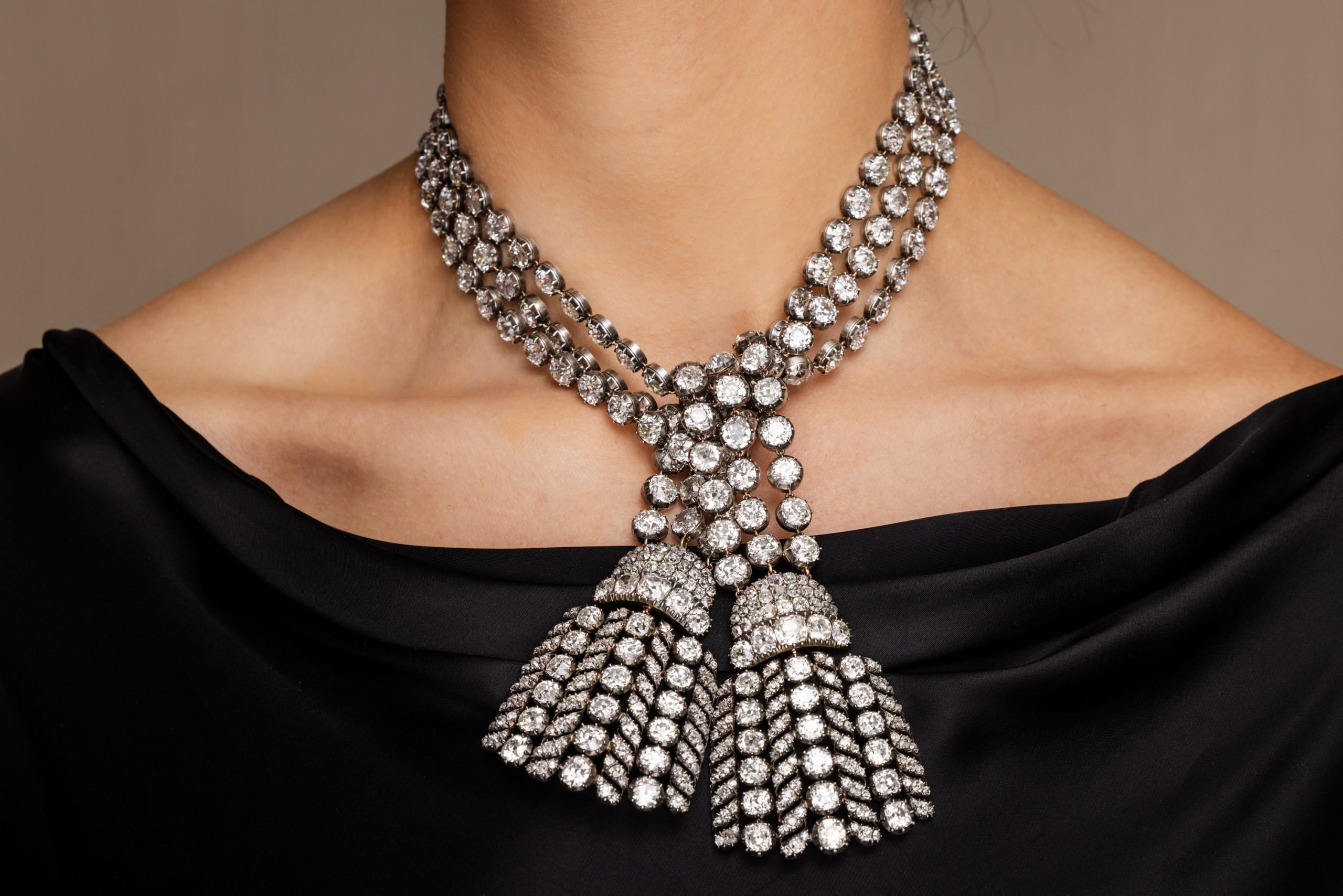
An antique necklace composed of 500 diamonds, some of which may have been drawn from the piece that doomed Marie Antoinette and the French monarchy, is heading for auction in Geneva this November where it is expected to fetch up to $2.8 million.
The 18th-century necklace, which is made of approximately 300 carats, has a mysterious backstory and is making its first appearance in half a century. It’s known that in the early 20th-century the necklace came into the possession of the Marquesses of Anglesey, an Anglo-Welsh family with close relations to the British Royal family.
Accordingly, Marjorie Paget, the Marchioness of Anglesey, wore the jewel to coronation of King George VI in 1937 and her daughter-in-law, Shirley Paget, wore it to the coronation of Queen Elizabeth II in 1953.
The necklace’s diamonds are from India’s Golconda mines, which were first worked in the 4th-century B.C.E. Photo: courtesy Sotheby’s.
Sometime in the early 1960s the necklace left the Anglesey’s possession and appeared in a 1976 exhibition at New York’s American Museum of Natural History. It then entered the collection of the current consignor, whom Sotheby’s describes as an “important Asian collector.”
The jewelry has been tentatively connected to the 1784 Affair of the Diamond Necklace, a scandal that erupted following accusations that Marie Antoinette had not paid for an eye-wateringly expensive necklace. In fact, another woman had been impersonating the Queen of France and forging her signature. The Affair was just one factor that helped foment the French Revolution. The necklace has been dated to the decade preceding the French Revolution and it is widely believed that only royalty or upper echelon aristocrats at French or English courts could have created (and afforded) such a necklace.
“This is a sublime survivor from the opulent court life of the Georgian era, defined by its unrivaled pomp and splendor,” said Andres White Correal, chairman of the Sotheby’s jewelry department. “It is a fortune in diamonds and also a masterclass in exquisite design, workmanship, and technical innovation… It is the nec plus ultra of 18th century jewelry design.”
Marjorie Paget wearing the diamond necklace posing for a photograph taken by Cecil Beaton. Photo: courtesy Condé Nast/Sotheby’s.
The necklace’s diamonds are drawn from India’s Golconda mines, which were among the first in the world to be discovered and industrialized. The mines turned India into the globe’s principal producer of diamonds for roughly a millennium with Golconda diamonds prized for their transparency and purity.
The necklace is composed of three rows of diamonds with a tassel affixed at each end. As was the 18th-century period custom, the jewelry could be worn in a variety of ways including sewn onto an item of clothing or worn around the neck with the tassels dangling or tied in a knot.
The necklace is setting off on a global tour beginning at Sotheby’s London before heading to Hong Kong, New York, Singapore, Taipei, Dubai, and Geneva, where it will be sold on November 11.